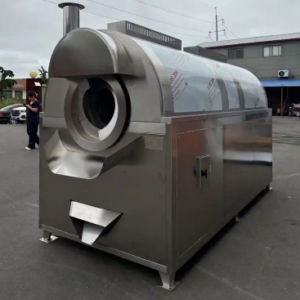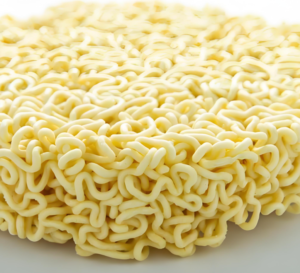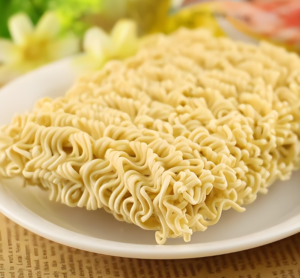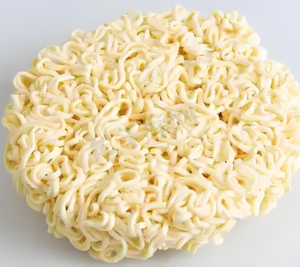Temperature Control in Macaroni Drying Process: A Comprehensive Guide
1. Introduction to Thermal Management in Pasta Production
Precise temperature control during macaroni drying is critical for:
macaroni making machine
Toggle- Quality preservation (color, texture, nutritional value)
- Microbial safety (pathogen control)
- Production efficiency (energy optimization)
- Structural integrity (preventing cracking/checking)
Modern industrial drying achieves moisture reduction from ~31% to 12.5% while maintaining product quality through multi-stage thermal protocols.
2. Critical Temperature Zones & Control Parameters
2.1 Pre-Drying Phase (Stabilization)
- Temperature range: 50-55°C
- Duration: 15-20 minutes
- RH control: 75-80%
- Purpose:
- Surface hardening to prevent sticking
- Initial moisture gradient establishment
- Gluten network stabilization
Control Method:
PID-controlled air circulation with ±0.5°C accuracy using RTD sensors at product level.
2.2 Primary Drying Stage
- Temperature progression:
- Zone 1: 60-65°C (90 minutes)
- Zone 2: 70-75°C (120 minutes)
- Zone 3: 80-85°C (60 minutes)
- Moisture reduction: 31% → 18%
- Air velocity: 1.2-1.5 m/s
Key Controls:
- Infrared thermography monitors surface temperature differentials
- Zone-specific humidity sensors maintain 65%→55% RH gradient
- Automatic dampers adjust air flow patterns
2.3 Final Drying & Conditioning
- Temperature ramp-down:
- 85°C → 60°C over 90 minutes
- Hold at 55°C for 4 hours
- Equilibrium moisture target: 12.5±0.3%
Advanced Features:
- Dielectric moisture sensors provide real-time feedback
- Heat recovery systems reuse 40% of thermal energy
3. Temperature-Dependent Quality Factors
| Parameter | Under-Dried | Optimal | Over-Dried |
|---|---|---|---|
| Color | Pale yellow (L*>65) | Golden yellow (L*58-62) | Brownish (a*>5) |
| Texture | Gummy (>70% stickiness) | Al dente (800-1000g firmness) | Brittle (<600g) |
| Cooking Loss | >8% | 5-6% | 7-8% |
| Shelf Life | <6 months (mold risk) | 24 months | 18 months (oxidation) |
4. Advanced Control Technologies
4.1 Real-Time Monitoring Systems
- Fiber-optic temperature probes embedded in product mass
- Wireless data loggers track thermal history
- AI-powered predictive control adjusts parameters based on:
- Raw material variability
- Ambient conditions
- Production rate changes
4.2 Energy Optimization Methods
- Heat pump-assisted drying reduces energy use by 35%
- Microwave hybrid systems enable lower air temperatures (50-60°C)
- Phase change materials buffer thermal fluctuations
5. Troubleshooting Temperature Issues
Problem: Surface cracking
Solution: Reduce Zone 3 temperature by 5°C and increase RH 10%
Problem: Uneven drying
Solution:
- Verify air flow balance (smoke testing)
- Calibrate zone temperature sensors
- Adjust product bed depth
Problem: Color degradation
Solution: Implement oxygen-reduced atmosphere (<5% O₂) in high-temp zones
6. Industry Trends in Thermal Control
- Machine learning algorithms that predict optimal drying curves based on:
- Semolina protein quality
- Extrusion parameters
- Target product specifications
- IoT-enabled dryers with remote monitoring/control
- Low-temperature long-time (LTLT) drying for premium products:
- Max 60°C for 10-12 hours
- Better nutrient retention
- Enhanced texture
7. Conclusion
Modern macaroni drying temperature control blends food science with precision engineering. By implementing:
- Multi-zone thermal profiling
- Real-time monitoring
- Adaptive control systems
Manufacturers achieve:
✔ Consistent product quality
✔ Energy efficiency (≤1.2 kWh/kg)
✔ Maximum production yield (>99.5%)
Future developments will focus on:
- AI-optimized drying recipes
- Sustainable thermal technologies
- Enhanced nutrient preservation techniques
Would you like detailed specifications for implementing these controls in your production facility?








